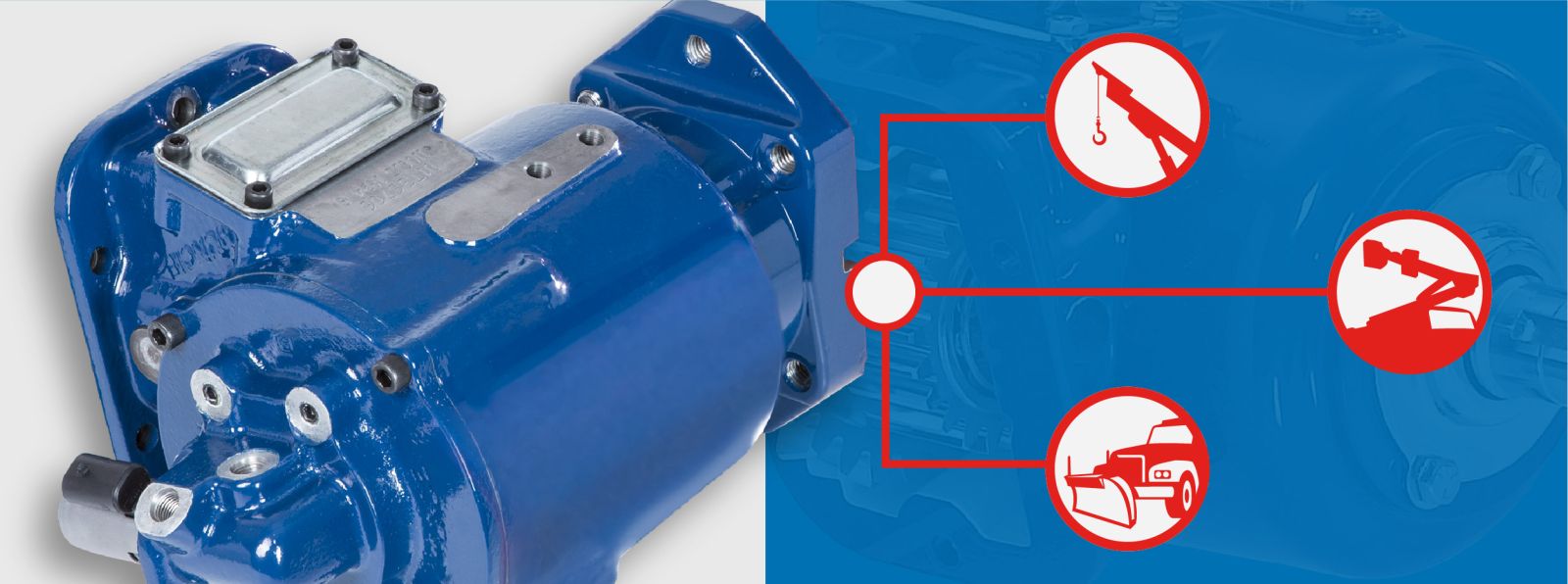Configuring the CS6 Series PTO for the Allison 1000/2000 RDS transmission

As we discussed in our previous article, “Durable Design and Proven Results: The Best PTO Fit For Your Allison 1000/2000 RDS Transmission,” the CS6 Series power take-off (PTO) can be used on nearly every single work truck application utilizing the Allison 1000/2000 RDS transmission.
This clutch shift, or hot shift, PTO provides the ability for the PTO to be engaged with the vehicle in motion by using friction disks instead of sliding gears. This prevents accidental PTO and transmission damage due to improper shifting practices that may be seen with standard mechanical shift PTOs. Our CS6 Series PTO includes numerous speed ratios, shift options, and output flanges to allow flexibility to be used across most work truck applications.
But how do you determine which PTO configuration is best for you? With hundreds of potential model number configurations, just on this transmission alone, it can oftentimes be challenging to know the best fit.
To start, it’s important to understand which side of the transmission the PTO will be mounted to. All Allison 1000/2000 RDS models come with the option to mount the PTO on either the left or right side. This decision is often made by reviewing space around the PTO aperture to make sure there is enough space to mount the PTO and intended hydraulic pump.
The speed requirement of the driven component (hydraulic or mechanical) and/or the desired PTO percentage will be the next thing to configure. This will be determined by the revolutions per minute (RPM) you intend to operate the engine at while utilizing the PTO. On this particular transmission, since it’s torque converter driven, the PTO won’t be engaged until the engine reaches 1,200 RPM. Therefore, all PTO percentages should be calculated based on a 1,200 RPM engine speed or higher.
Next, you’ll need to note the direction of the PTO output shaft, with the Allison 1000/2000 this is easy—it will always be the same as the engine crankshaft rotation, which is clockwise when viewed from the front. This is noted as “CRNK” in literature documentation.
After this, you’ll want to make sure the PTO series selected is appropriate for the torque and horsepower requirements of the application, and then identify the proper output options for either a direct mounted pump or driveline and the method in which you prefer to engage the PTO.
Below are some common configurations for popular applications:
Snow Plow
Generally, the most common ratios used on snow plows will be the 04 (PTO % = 107%) or 05 (PTO % = 117%), utilizing the SAE B or BB output flange with an integral solenoid. Being a mobile application, the ability to shift in motion provides a big advantage. This will most commonly be used with our K Series gear pump or a piston pump.
Tow Truck
Like snow plows, tow truck applications will also commonly use the 04 (PTO % = 107%) or 05 (PTO % = 117%), ratio gears. These are also often paired with our K Series pump and SAE BB output.
Utility Truck
With a utility truck, while they too often use the 05 (PTO % = 117%) ratio gear, the output often depends on the size of the truck. Smaller trucks are probably going with a ¾"-11T output, with a F4 Series size pump. Bigger trucks may get into the K Series, or even piston pumps, which would be on an SAE A or SAE B output, with a 7/8"-13T shaft.
It’s important to note when utilizing the CS6 Series PTO with the Allison 1000/2000 RDS transmission you must have pressure lubrication. You will need to choose the “P” special feature option to ensure you have this. Without it, the PTO cannot get proper lubrication and can cause damage. The integral solenoid is also important to include to reduce maintenance costs and allow for an easier installation.
If this process is new to you, it can be confusing. Please reach out to our customer service team to help walk through the proper selection or reference the Quick Reference PTO Catalog pages linked below.
Quick Reference PTO Catalog:
- ALLI-09 for 1000 and 2000 Series (EVS, RDS, SPS, MHS, BUS, TRV)
- ALLI-13 for 2000 Series (Hino Chassis Model Year 2015–2020)
- ALLI-15 for 1700, 1750, 2700, 2750 (Model Year 2019–Later), GM 4500HD, 5500HD, 6500HD or International CV Series
- ALLI-16 for 2000 Series (Hino Chassis Model Year 2021–Later)


